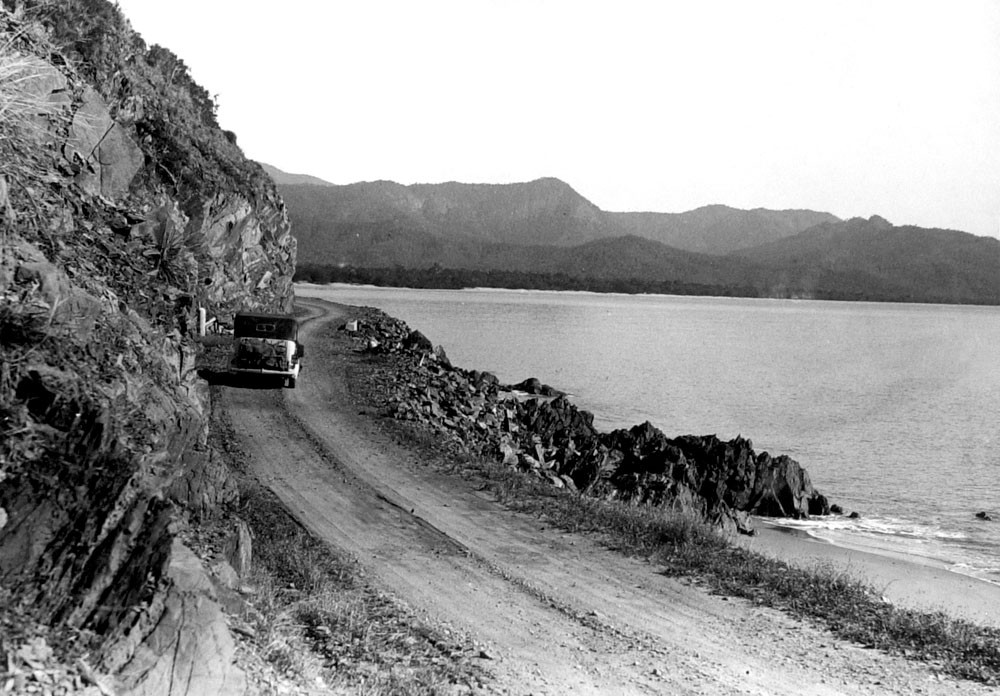Community
30 November, 2022
The scenic route
MOTORING enthusiasts in the Cairns region had long complained there weren’t enough interesting road trips on which to drive their beloved vehicles.

Although there were fine views to be enjoyed on the Range Road from Gordonvale up to the Tablelands and scenic drives to numerous waterfalls and tropical rainforests, they yearned for beach vistas.
When construction started on the highway from Cairns to Port Douglas, its completion date was eagerly awaited by the Cairns locals. In addition to spectacular ocean views, motorists could also drive their vehicles on the beach at journey’s end.
The “Townsville Daily Bulletin” reported on May 12, 1933, that a traveller who had just completed a “hiking tour” of the proposed road declared it to be “one of the most outstanding marine drives of the world. The contours of the rocky headlands, alternated by pretty beaches, lend themselves particularly to the general scheme. From the Cairns end, the vista bursts upon the eye suddenly and effectively”

On Sunday, December 17, 1933, the new road was officially opened by the QLD Minister for Works, Mr. H. A. Bruce. One section however, around the White Cliffs, was only open to one-way traffic due to the fact that there was a drop of 200 feet onto the rocks below.
It didn’t take long for the first incident to occur. On January 10, 1934, it was reported that Mossman man, William Page, lost control of his utility truck near White Cliffs. The vehicle had rolled and gone over the precipice but was stopped from falling any further by a tree. The driver suffered a fractured leg.
Midway along the route was Hartley’s Creek. It was known as a sportsman’s and camper’s paradise. There were “hundreds of wild pigs and other game”, as well as fishing and “good beach bathing”.

In September 1934, Mr. Herbert Evans or “Tiny” as he was known, established an “al fresco morning and afternoon tea apartment”. It was described as a “pretty rustic tea house” where “delicious tea and edibles were served, to the accompaniment of music”.
By November 1935, Mrs. Mabel Evans had built a new kiosk measuring 30 feet by 22 feet, constructed of several local timbers including black bean, pencil, acacia and red cedar. It was renamed the “Half-way House” and was adorned with all manner of tropical orchids.
The Governor, Sir Leslie Wilson, visited in 1939 and planted two traveller’s palms at the resort. His Excellency and Lady Wilson were then given a tour of mineral exhibits and introduced to “Charlie” the crocodile, who had been resident for two years.
On May 20, 1948, Herb advertised “The Half-Way House Kiosk and Zoo” at Hartley’s Creek for sale. He cited illhealth as the reason for selling the “going and growing concern”.


